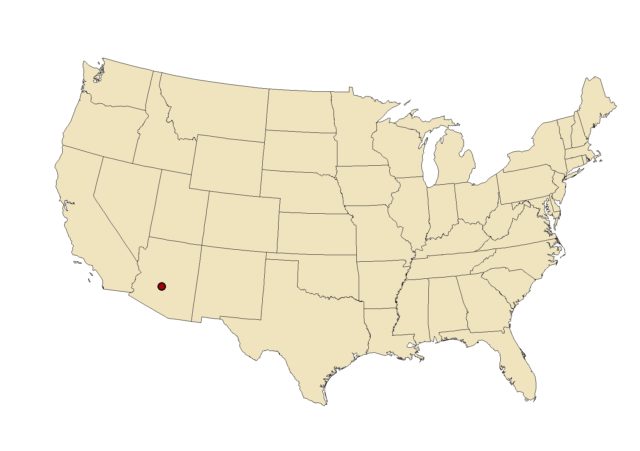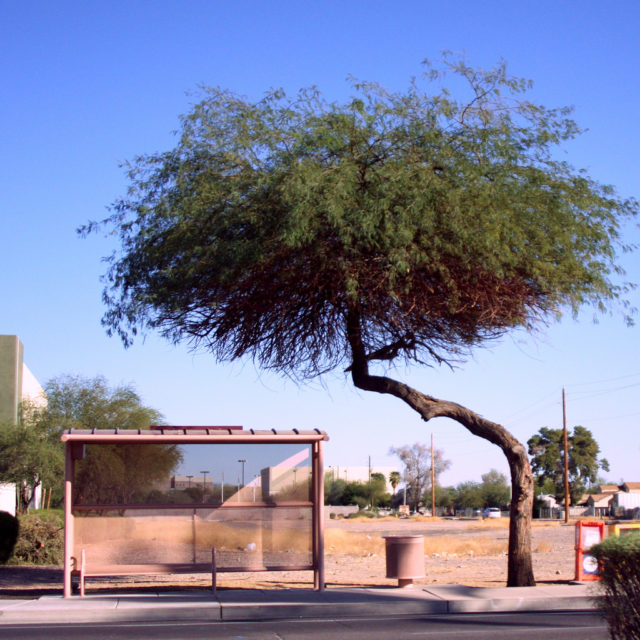The Tree and Shade Master Plan, adopted by the Phoenix City Council on January 5th, 2011, strives to create a healthier, more livable and prosperous Phoenix through the strategic investment in care and maintenance of the urban forest and engineered shade. Trees and shade structures are critical components of the city’s infrastructure and over the long-term can save millions of dollars. The plan provides a detailed roadmap to achieve an average 25% shade coverage for the entire city.
 Trees function as the lungs of a community as well as maintain an important part of the infrastructure framework. The quality and quantity of urban forestry are indicators of environmental health and provide an opportunity to enhance the quality of life of residents and visitors. Incorporating green infrastructure into planning policies and initiatives has a number of benefits; shade mitigates climate change by reducing the need for air conditioning thus decreasing energy costs and sequestering carbon emitted by sources like transportation.
Trees function as the lungs of a community as well as maintain an important part of the infrastructure framework. The quality and quantity of urban forestry are indicators of environmental health and provide an opportunity to enhance the quality of life of residents and visitors. Incorporating green infrastructure into planning policies and initiatives has a number of benefits; shade mitigates climate change by reducing the need for air conditioning thus decreasing energy costs and sequestering carbon emitted by sources like transportation.
Urban forestry builds community resilience to climatic events like intense rain through flood and erosion management. Overall, urban forestry policies and initiatives lay the groundwork for the implementation of adaptive ecosystem management as well as the usage and enhancement of a community’s natural assets.
Phoenix, Arizona’s Tree and Shade Master Plan outlines three components to achieve a healthy urban forest:
- Raise awareness – educate staff and the public through informational products and demonstration projects. Raising awareness of the importance of maintaining a healthy urban forest and creating partnerships with community groups, businesses, non-profit organizations, and public agencies expands the reach of the city government and shifts responsibility to the community. Specific demonstration projects include Gimme Shelter, a project that provides real-life evidence of all the benefits of a thriving urban forest, like increased walkability, decreased urban heat island effect, and helping to create more social connections.
- Thoughtful, thorough locating of shade – determine the areas suited for preservation and protection and increase the number of trees and vegetation at those locations. Additionally, locate appropriate sites for large shade trees.
- Integrate urban forestry components into the city’s planning and development process.

Phoenix, out of necessity, needs an urban forestry plan to combat the brutal summers. The Tree and Shade Master Plan, based on the three components detailed above, provides a good framework for future projects across the west to follow to reap climate, community, and economic related benefits associated with urban forestry.
Phoenix Tree and Shade Master Plan – PDF
Phoenix-Urban-Forestry-PlanCity of Phoenix Tree and Shade Program – website
Downloaded from ResilientWest.org
a project of
Resilient Communities and Watersheds
- Challenges:
- urbanheat
- urbanform
- publichealth
- energy
- State:
- arizona
- Scale:
- community
- Type:
- urban, suburban

